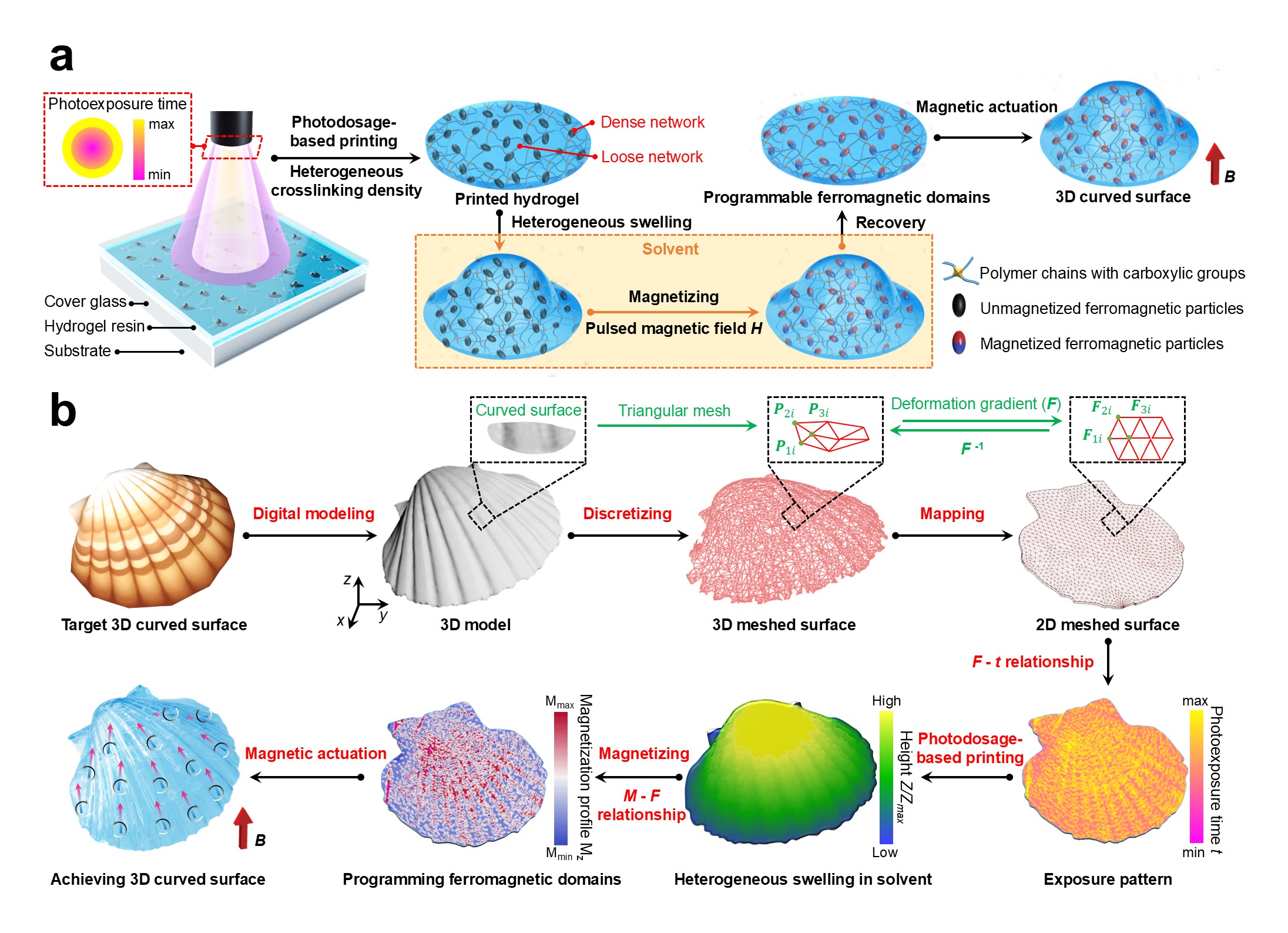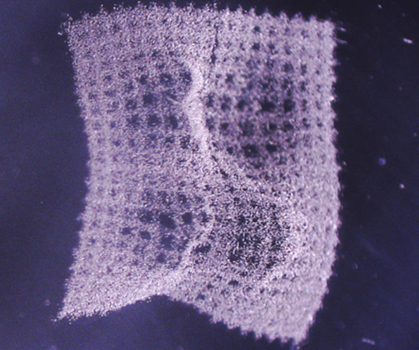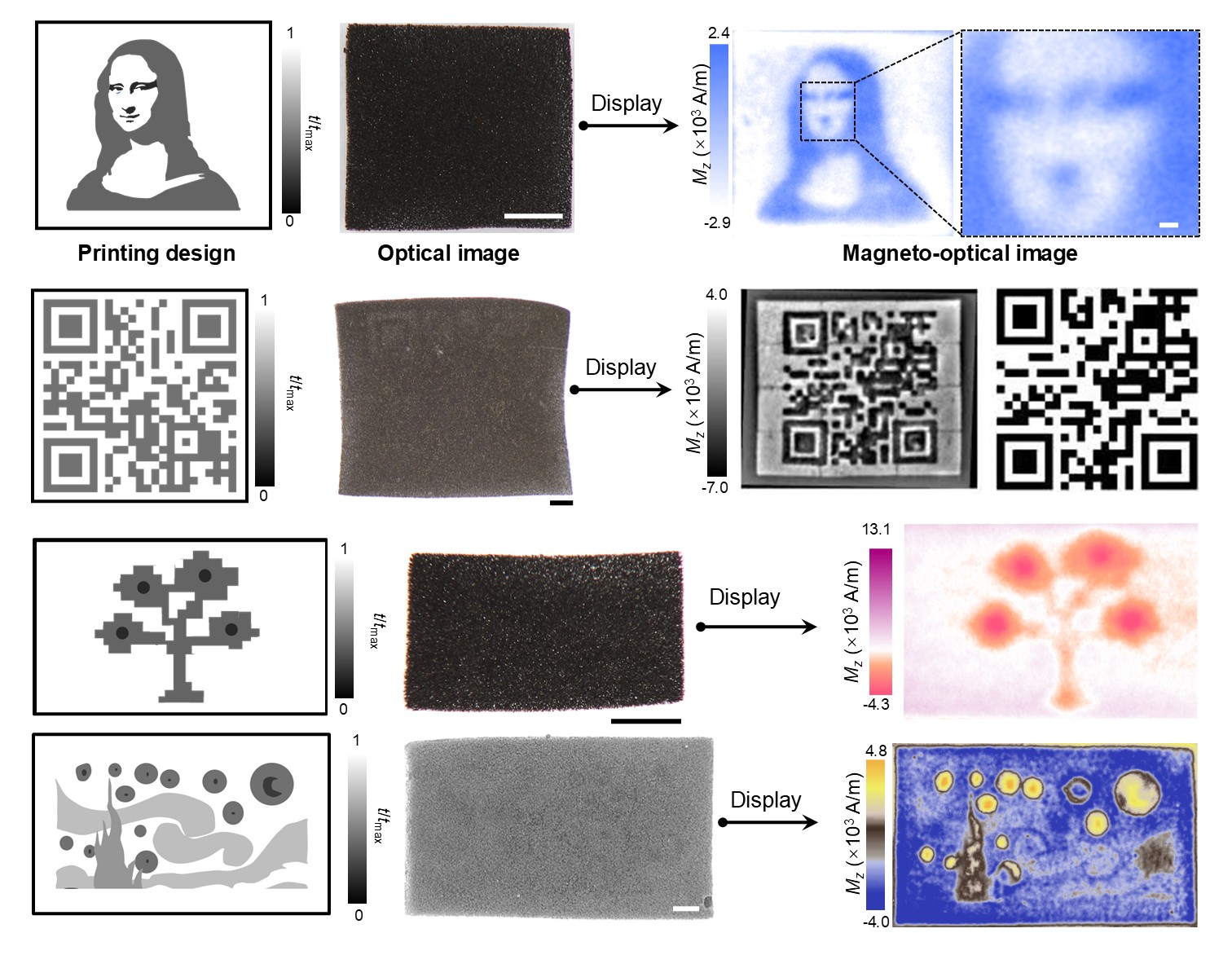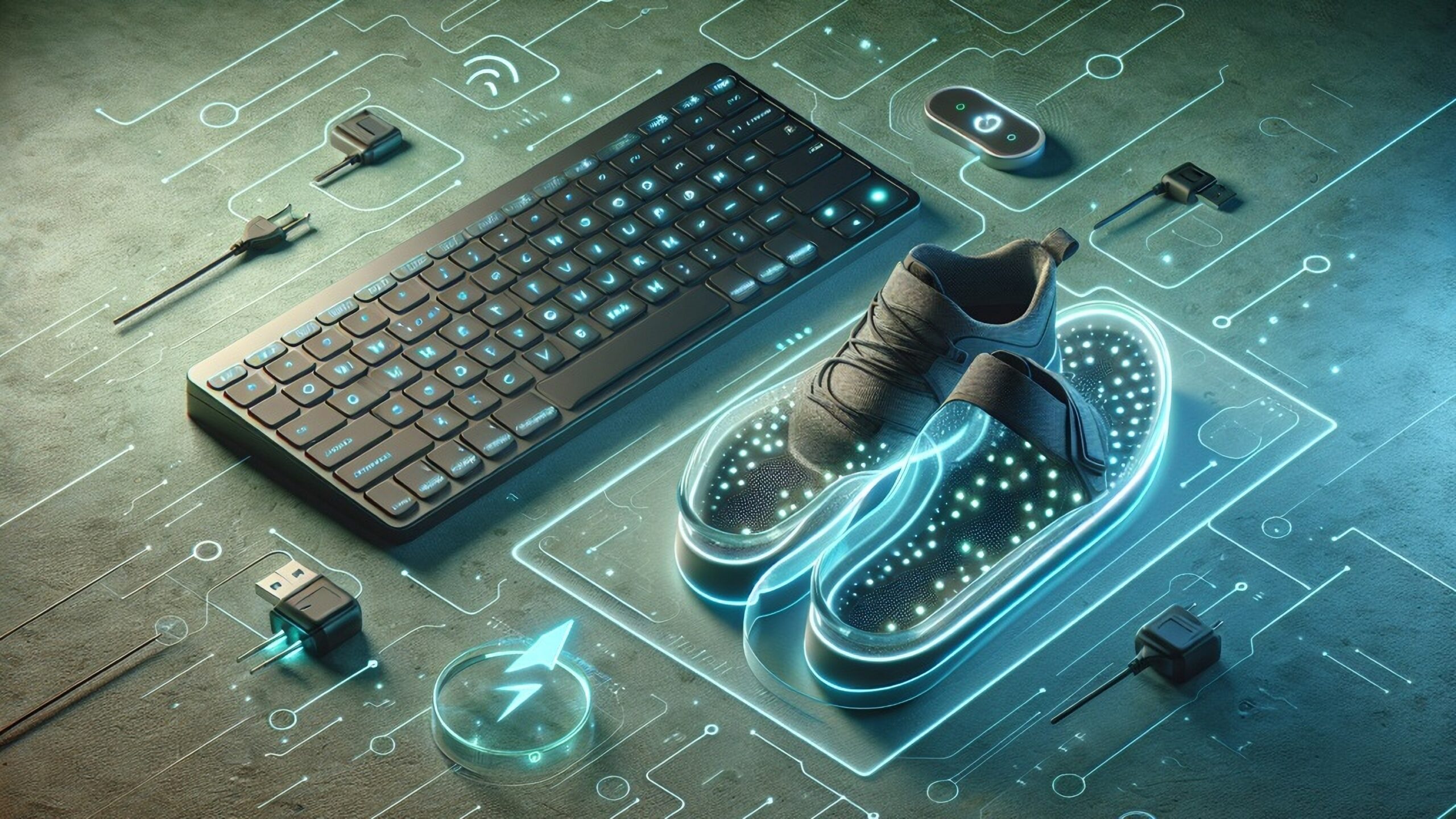Make a fist with your hand. Observe how the skin and muscles instantly ripple and deform, dynamically changing shape to meet the demands you’re making of them. Now imagine trying to programme a computer to create a similar material. Not easy, right?
In fact, until recently, the amount of computational power required made it close to impossible. But that’s changing, thanks to a new programming technology for magnetic soft materials developed by a team at The Chinese University of Hong Kong (CUHK), led by Professor Zhang Li from the Department of Mechanical and Automation Engineering.
The power of light in shaping magnetic soft materials
At the heart of this revolutionary technology is a process that combines lasers, magnets, and hydrogels. The team uses a 3D printer to precisely control the light source, a method known as photocuring. This involves exposing UV-sensitive hydrogel resin, which is incorporated with magnetic particles, to a UV light source, enabling the formation of any two-dimensional UV light pattern. By adjusting the exposure time of the light source in different areas during the printing process, the team can create hydrogels with diverse properties.
“The photocuring process allows us to cure the hydrogel resin into various designs,” explains Professor Zhang. “By precisely controlling the light intensity, we can programme the material to achieve the desired magnetic response behaviour.”

Inverse programming: a game-changer
Traditional magnetic programming technology involves predicting the response behaviour of materials—a time-consuming, trial-and-error process that doesn’t guarantee a high degree of precision. In contrast, the CUHK team’s inverse programming technology designs and regulates the magnetisation distribution within the magnetic soft material to achieve the desired magnetic response behaviour, such as bending and folding under an applied magnetic field, using a mathematical modelling approach, which can be time-efficient and precise.
“The control of the magnetic field is achieved using a rectangular permanent magnet mounted on a three-dimensional mobile platform,” says Professor Zhang. “We can adjust the position of the mobile platform through motor control, allowing the magnet to move away from the magnetic material to weaken the magnetic field strength or approach it to enhance the field strength. Additionally, we can modify the orientation of the magnet to change the direction of the magnetic field, enabling the magnetic soft material to be exposed to an adjustable magnetic field and produce the desired deformation.”
Revolutionising medicine: tailor-made patches for precision drug delivery
Professor Zhang’s team has been working for the past decade on magnetically driven soft robots for biomedical applications, capable of tasks that traditional, rigid robots can’t. This latest work builds on their previous research into magnetic programming of soft materials and actuators.
The new technology has already been extensively tested in vitro, ex vivo and in vivo. The team is planning further tests in large animal and pre-clinical models. Professor Zhang anticipates that these studies will involve loading drugs into the customised patches, allowing them to be delivered precisely to places they’re needed.
“Once the hydrogel has been deformed during the printing process, it can be pulled and twisted into a variety of shapes inside the body using a pulsed magnetic field,” Professor Zhang explains. “This allows it to conform closely to the shape of, for example, patients’ gastrointestinal tracts.

He adds, “The inside of the human body is a ridiculously complicated place, with most organs being incredibly complex shapes. That makes it a formidably challenging task to develop patches that can precisely deliver medication within the body of a specific patient. The new CUHK-developed technology doesn’t just create new materials that can be radically bent, twisted and reshaped within the body, but also provides a framework that allows other people to make them.”
For instance, in the case of gastric ulcers, magnetic soft materials can be tailored to the shape of the lesion and loaded with ulcer-treating drugs. These magnetically programmed soft robots can then be driven by an applied magnetic field to reach and adhere to the lesion, releasing the drugs to achieve the desired therapeutic effect.
Beyond medicine: information storage and face replication
The possible applications of these remarkable materials aren’t limited to the medical field. Surprisingly, they could also be useful as a way of storing information.
“We can freely adjust the magnetisation distribution of magnetic soft materials by controlling the light source,” says the professor. “This allows us to design the corresponding magnetisation distribution based on the information we wish to store, such as oil paintings or QR codes, and then manufacture the appropriate magnetic materials using our method.”

The information isn’t visible to the naked eye but is easily revealed with equipment such as a magneto-optical microscope.
The same features could also be exploited in three dimensions to enable accurate human face replication. Not only can these materials be bent and twisted into endless shapes, it seems – they also have endless potential uses.











